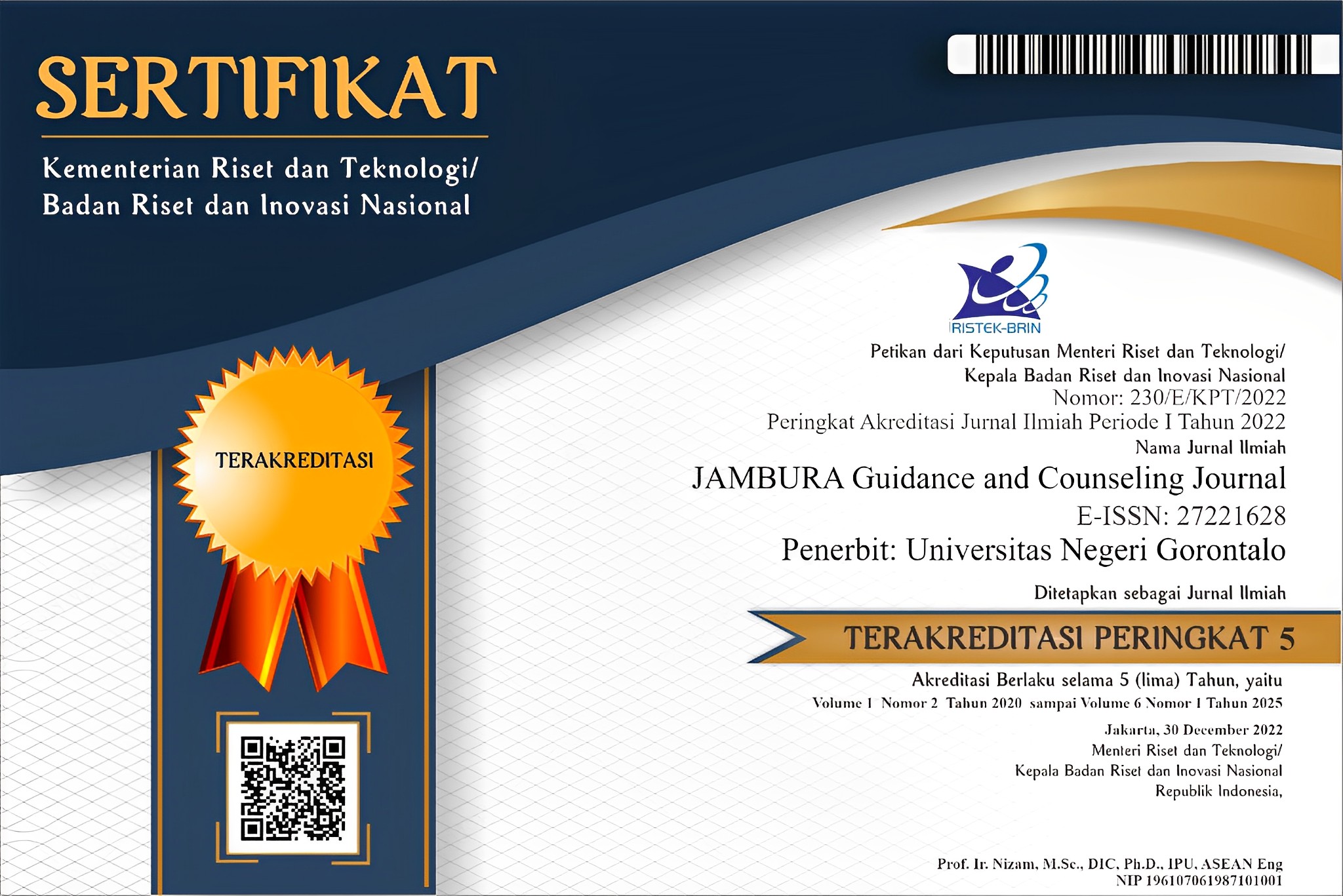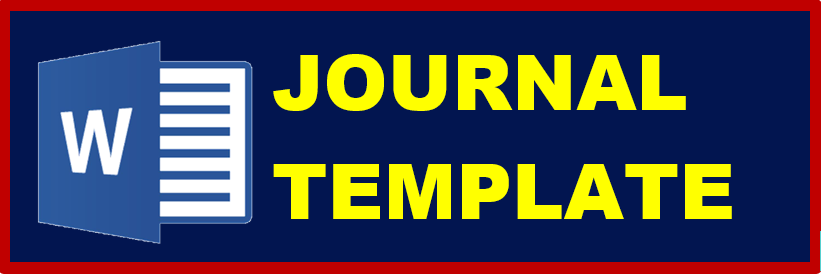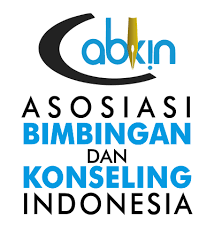Perilaku Agresif dan Implikasinya Terhadap Bimbingan dan Konseling
Abstract
Tujuan penelitian ini adalah mengetahui gambaran umum perilaku agresif pada siswa SMP Islamiyah berdasarkan tingkatan kelas, jenis kelamin serta merencanakan program bimbingan dan konseling untuk menurunkan perilaku agresif siswa SMP Islamiyah. Penelitiaan ini menggunakan metode studi deskriptif kuantitatif guna mengungkap gambaran mengenai perilaku agresif siswa SMP Islamiyah. Sampel dalam penelitian ini menggunakan probability sampling dengan teknik simple random sampling yang berjumlah 320 siswa. Hasil dari penelitian ini yaitu gambaran umum perilaku agresif siswa SMP Islamiyah yang berada pada kategori sedang mencapai skor presentase sebesar 64%. Siswa yang berada pada kategori tinggi dengan presentase sebesar 8%, sedangkan siswa yang berada pada kategori rendah menunjukkan hasil presentase sebesar 28%. Artinya sebagian besar siswa telah melakukan perilaku agresif pada kategori sedang, namun pada kategori tinggi pun perlu dilakukannya layanan bimbingan konseling untuk menurunkan perilaku agresifnya. Kekurangan dari penelitian ini yaitu sampel masih terbatas sehingga hanya mengetahui perilaku agresif siswa SMP Islamiyah dan perbedaan penelitian ini hanya dilihat dari jenis kelamin. Sehingga hasil penelitiaan ini masih kurang beragam.
References
Buss, Arnold H., and Mark Perry (1992). "The aggression questionnaire." Journal of personality and social psychology 63.3: 452.
DeWall, C. N., Finkel, E. J., & Denson, T. F. (2012). Self‐control inhibits aggression. Social and Personality Psychology Compass, 5(7), 458-472.
Ferdiansa, G., & Neviyarni, S. (2020). Analisis perilaku agresif siswa. JRTI (Jurnal Riset Tindakan Indonesia), 5(2), 8-12.
Herlina, U. (2015). Teknik role playing dalam konseling kelompok. Sosial Horizon: Jurnal Pendidikan Sosial, 2(1), 94-107. Hidayat,H,Yusri,& Ilyas,A. (2013). Profil siswa agresif dan peran guru BK. Jurnal ilmiah konseling: konselor, 2 (November 2012), 7-10
Krahé, B. (2013). Social Psychology: A Modular Course: The Social Psychology of Aggression. Second Edition. Taylor & Francis Group. New York
Murray-Close, D Ostorv, J.M,. Nelson, D.A, Crick, N.R., & Coccaro,E.F (2010). Proactive, Reactive And Romantic Relational Aggression In Adultshood: Measurement, Predictive Validity, Gender Differences And Association With Intermittent Explosive Disorder. Journal Of Psychiatric Research, 44(6), 393-404.
Nugraha, A., & Sulistiana, D. (2017). Kepekaan multibudaya bagi konselor dalam layanan konseling. Journal of Innovative Counseling: Theory, Practice, and Research, 1(01), 9-18.
Polling, D. V, Smith, S.W Taylor, G.G & Worth, M (2019). Direct Verbal Aggression in School Settings: A Review of the Literature. Aggression and Violent Behaviour
Rozzaqyah, F., Silvia, A. R., & Wisma, N. (2021). Pengembangan Inventori Kecenderungan Perilaku Agresif Siswa Smp. Jurnal Bimbingan Dan Konseling Ar-Rahman, 7(1), 1-11.
Sentana, M. A., & Kumala, I. D. (2017). Agresivitas dan kontrol diri pada remaja di Banda Aceh. Jurnal Sains Psikologi, 6(2), 51-55.
Sulistiana, D, Nilamsari, Sugara. (2020). Analisis Determinasi Diri Remaja. Journal of Innovative Counseling: Theory, Practice, and Research, 4(01), 20-33.
Yanizon, A. (2019). Penyebab munculnya perilaku agresif pada remaja. KOPASTA: Journal of the Counseling Guidance Study Program, 6(1).
Yunalia, E. M., & Etika, A. N. N. (2020). Analisis perilaku agresif pada remaja di sekolah menengah pertama. JHeS (Journal of Health Studies), 4(1), 38-45.
Copyright (c) 2023 Deratih Fauzy Am, Agung Nugraha, Dewang Sulistiana3

This work is licensed under a Creative Commons Attribution-ShareAlike 4.0 International License.
Authors who publish with this journal agree to the following terms:
- Authors retain copyright and grant the journal right of first publication with the work simultaneously licensed under a Creative Commons Attribution-ShareAlike 4.0 International License that allows others to copy and redistribute the material in any medium or format with an acknowledgement of the work's authorship and initial publication in this journal and also allows to remix, transform, and build upon the material for any purpose, even commercially with contributions under the same license as the original.
- Authors are able to enter into separate, additional contractual arrangements for the non-exclusive distribution of the journal's published version of the work (e.g., post it to an institutional repository or publish it in a book), with an acknowledgement of its initial publication in this journal.
- Authors are permitted and encouraged to post their work online (e.g., in institutional repositories or on their website) prior to and during the submission process, as it can lead to productive exchanges, as well as earlier and greater citation of published work.
- Privacy Statement
The names and email addresses entered in this journal site will be used exclusively for the stated purposes of this journal and will not be made available for any other purpose or to any other party.












